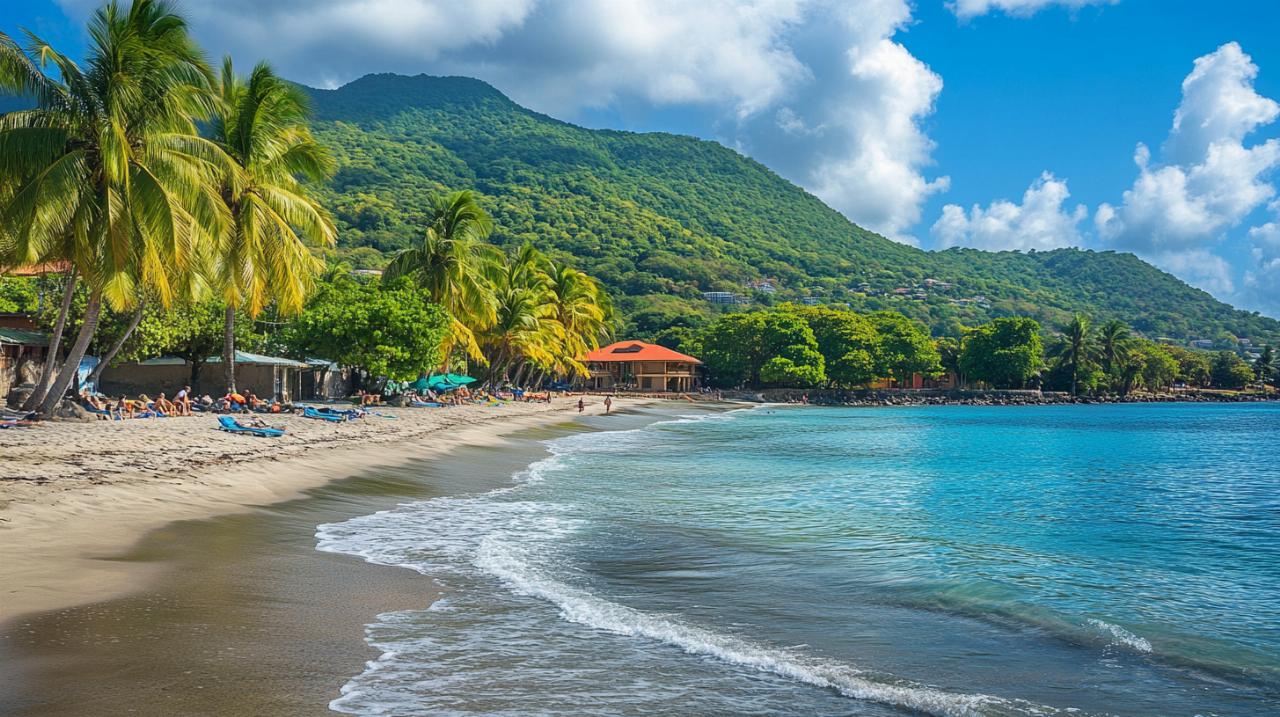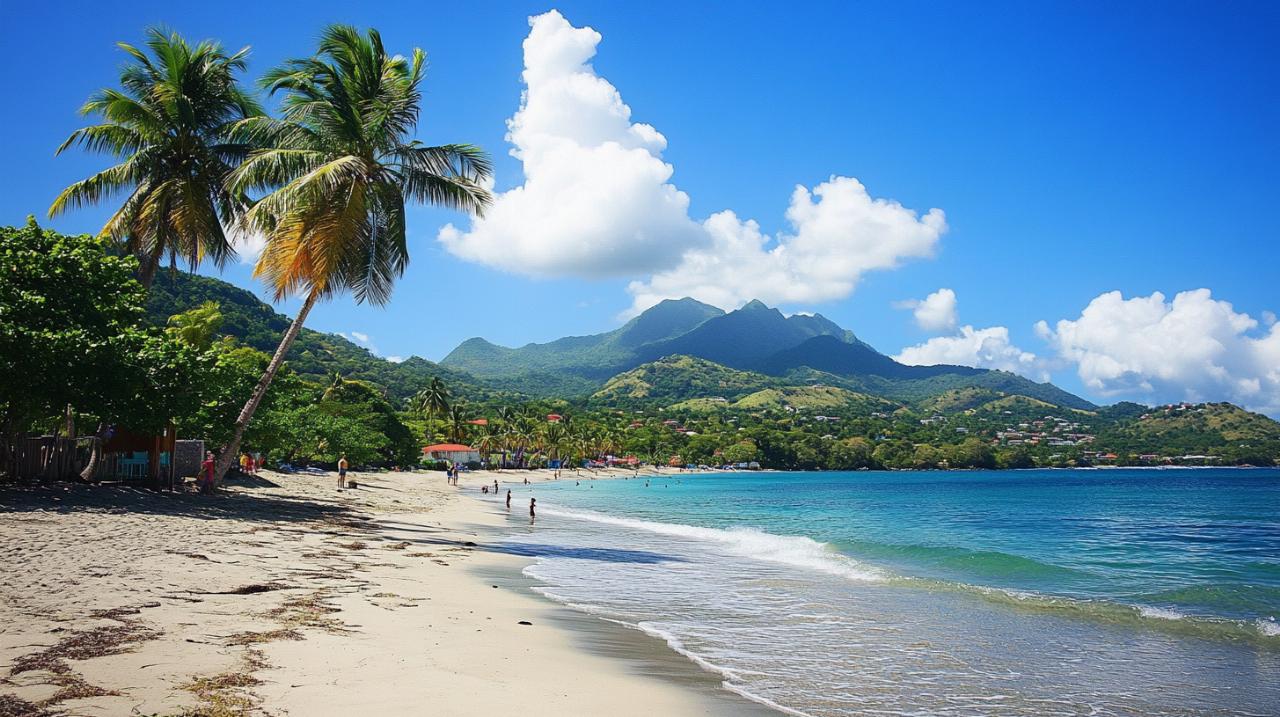Planning Your February Getaway? Martinique Reviews, Climate Insights, Luxury Accommodation, and the Best Activities to Discover
Martinique in February offers a splendid escape from the dreary British winter, blending French sophistication with Caribbean warmth. This enchanting island in the French Antilles promises sun-drenched beaches, lush rainforests, and a vibrant Creole culture that will leave you utterly captivated. Whether you're seeking luxury resorts, adventurous hikes, or simply a chance to unwind on pristine shores, Martinique delivers an unforgettable experience during one of its most glorious months.
February Climate in Martinique: Why It's the Perfect Escape from British Winter
February sits comfortably within Martinique's dry season, which stretches from November through May, making it an ideal time to visit this tropical paradise. While London shivers under grey skies and chilly winds, Martinique basks in warm sunshine and balmy breezes. The island's climate during this month is nothing short of delightful, offering the perfect conditions for beach lounging, exploration, and outdoor pursuits.
Temperature and Sunshine: What to Pack for Paradise
The temperatures in Martinique during February typically hover in the late twenties Celsius, with daytime highs rarely climbing above thirty degrees. This moderate warmth creates an agreeable atmosphere that's perfect for all sorts of activities without the oppressive heat that can sometimes characterise the summer months. Evenings remain pleasantly mild, allowing for romantic strolls along the beach or dining al fresco without needing a jumper. The sunshine is abundant and generous, with clear blue skies dominating most days. When packing for your February getaway, focus on lightweight, breathable fabrics that'll keep you comfortable in the tropical climate. Cotton shirts, linen trousers, and flowing dresses are ideal choices. Don't forget your swimmers, as you'll likely spend considerable time in the turquoise waters. A wide-brimmed hat and quality sunglasses are essential for protecting yourself from the Caribbean sun, whilst a light cardigan might come in handy for air-conditioned restaurants or the occasional cooler evening. Comfortable walking shoes are crucial if you plan to explore hiking trails or cobbled streets in historic towns.
Rainfall patterns and humidity levels during peak season
One of the greatest advantages of visiting Martinique in February is the minimal rainfall. The island experiences very little precipitation during this month, with any showers that do occur typically being brief and refreshing rather than prolonged downpours. These occasional sprinkles often pass quickly, leaving behind sparkling foliage and rainbow-streaked skies. The humidity levels are notably lower than during the wetter months from July through November, making the warmth far more comfortable and enjoyable. This combination of sunshine, moderate temperatures, and low humidity creates ideal conditions for camping, sea trips to spot marine mammals, and extended outdoor adventures. The water temperature hovers around a glorious twenty-eight degrees Celsius, which is absolutely perfect for swimming, snorkelling, and diving without needing a wetsuit. With such favourable weather patterns, February represents the high season in Martinique, so booking accommodation and car rental well in advance is highly recommended to secure the best options.
Luxury accommodation options: from swanky resorts to charming creole villas
Martinique offers an impressive range of accommodation to suit every taste and budget, from opulent beachfront resorts to intimate guesthouses brimming with local character. The island's status as a French overseas department ensures high standards across the board, whilst its Caribbean soul adds warmth and charm to every stay.
Top Southern Coast Resorts for an Indulgent Stay
The southern coast of Martinique is home to some of the island's most luxurious resorts, particularly around Les Trois-Îlets, which boasts numerous hotels with all the bells and whistles you could desire. These establishments typically offer pristine beaches, infinity pools overlooking the Caribbean Sea, spa facilities with treatments incorporating local ingredients, and restaurants serving exquisite fusion cuisine that marries French culinary techniques with Caribbean flavours. Many resorts provide water sports equipment, organised excursions, and attentive service that anticipates your every need. Sainte-Anne is another excellent choice for families seeking upscale accommodation with child-friendly amenities and easy access to some of the island's finest beaches. The resorts here often feature spacious suites, kids' clubs, and calm swimming areas perfect for little ones. For those wanting a slightly quieter atmosphere away from the busiest tourist areas, Le Diamant offers a wonderful balance of quality hotels with stunning views of the iconic Diamond Rock offshore, whilst maintaining a more relaxed and authentic vibe.
Boutique Hotels and Airbnb Alternatives for Authentic Caribbean Living
If you're after something more intimate and characterful, Martinique has plenty to offer beyond the large resort complexes. Les Anses-d'Arlet features charming Creole guesthouses where you can experience genuine Caribbean hospitality and architecture. These traditional properties often showcase colourful wooden facades, shuttered windows, and verandahs perfect for enjoying your morning coffee whilst watching the world wake up. Boutique hotels scattered across the island provide personalised service and unique design elements that reflect Martinique's cultural heritage. Many of these smaller establishments are family-run, offering insider knowledge about hidden beaches, local restaurants, and off-the-beaten-path attractions. For travellers seeking independence and flexibility, Airbnb rentals present an excellent alternative, ranging from hillside villas with panoramic ocean views to cosy apartments in the heart of Fort-de-France. Renting a Creole-style villa allows you to live like a local, shopping at markets for fresh produce and preparing meals with tropical ingredients. Regardless of which type of accommodation you choose, booking early is essential during February's high season to secure your preferred location and best rates.
Best Beaches and Coastal Experiences: Your Guide to Martinique's Shoreline
 Martinique's coastline is nothing short of spectacular, offering nearly two hundred kilometres of varied beaches from powdery white sands to dramatic black volcanic shores. The island's position in the Caribbean Sea ensures warm, crystalline waters that are perfect for swimming and marine exploration.
Martinique's coastline is nothing short of spectacular, offering nearly two hundred kilometres of varied beaches from powdery white sands to dramatic black volcanic shores. The island's position in the Caribbean Sea ensures warm, crystalline waters that are perfect for swimming and marine exploration.
Anse des Salines and Hidden Coves Worth Discovering
Les Salines stands as Martinique's most famous beach, and for good reason. This expansive stretch of white sand backed by coconut palms and sea grape trees epitomises Caribbean paradise. The shallow, calm waters make it ideal for families, whilst the natural shade provides relief from the midday sun. Despite its popularity, the beach is large enough that you can usually find a peaceful spot, especially if you arrive early in the morning. Beyond this iconic location, Martinique harbours numerous hidden coves that reward the adventurous explorer. Anse Dufour and Anse Noire sit side by side, offering contrasting experiences with golden sand at the former and dramatic black volcanic sand at the latter. Both are excellent for snorkelling, with turtles frequently spotted gliding through the clear waters. For those willing to venture to the northern coast, Anse Couleuvre provides a stunning black sand beach surrounded by lush rainforest, though the waters here can be rougher and are better suited to experienced swimmers. The beaches at Sainte-Luce offer a more local atmosphere with excellent seafood shacks serving freshly caught fish, whilst the shores near Le Diamant provide spectacular views of the offshore rock formation that gives the town its name.
Watersports, Snorkelling, and Diving Adventures in Turquoise Waters
February's warm water temperature of around twenty-eight degrees creates perfect conditions for all manner of aquatic activities. Snorkelling requires minimal equipment and reveals a vibrant underwater world of colourful coral reefs, tropical fish, and occasionally sea turtles or rays. Many beaches have designated snorkelling areas where the marine life is particularly abundant. For those seeking deeper exploration, diving in Martinique is exceptional, with numerous dive operators offering trips to sites around the island. When water temperatures exceed twenty-five degrees, as they do in February, visibility is typically excellent and marine life is most active. The volcanic origins of Martinique create interesting underwater topography with caves, walls, and rocky outcrops that harbour diverse species. Beyond snorkelling and diving, the island offers kayaking through mangrove forests, stand-up paddleboarding in calm bays, and sailing excursions along the coast. Sea trips specifically designed for spotting marine mammals become particularly rewarding in February when conditions are optimal. Dolphins are commonly sighted, and occasionally even whales pass through the waters surrounding Martinique. Many operators offer half-day or full-day boat tours that combine swimming stops, snorkelling opportunities, and the chance to observe these magnificent creatures in their natural habitat.
Beyond the Beach: Unforgettable Activities and Cultural Experiences
Whilst Martinique's beaches are undeniably magnificent, the island offers far more than coastal pleasures. Its rich history, lush interior, and vibrant culture provide endless opportunities for discovery and adventure.
Rainforest Hikes and Rum Distillery Tours for the Adventurous Traveller
Martinique boasts nearly one hundred and eighty kilometres of marked hiking trails that wind through rainforests, along coastal paths, and up volcanic slopes. February's temperatures, which typically remain below thirty degrees, create ideal conditions for trekking without the excessive heat of summer months. Mount Pelée, the active volcano that famously erupted in nineteen hundred and two, offers challenging hikes with rewarding panoramic views from its summit. Less strenuous trails can be found throughout the island, including paths through the Caravelle Peninsula nature reserve where colonial ruins peek through the jungle vegetation. When embarking on any hike, taking plenty of water, wearing a hat, and applying sunscreen regularly is essential, even during the relatively cooler February weather. After working up a sweat on the trails, a visit to one of Martinique's renowned rum distilleries provides the perfect reward. The Clément Distillery functions not only as a producer of exceptional rum but also as an open-air museum showcasing the island's agricultural heritage. Tours typically include walks through sugarcane fields, explanations of the distillation process, and tastings of various aged rums. The beautiful colonial mansion and manicured gardens at Clément offer insight into plantation life, whilst the tasting room allows you to appreciate the complex flavours that have made Martinique rum famous worldwide.
Local markets and authentic caribbean culture you mustn't miss
To truly understand Martinique, you must immerse yourself in its Creole culture, and there's no better place to do this than at the local markets. Fort-de-France, the capital, hosts vibrant markets where vendors sell tropical fruits, aromatic spices, handcrafted goods, and fresh fish straight from the morning catch. The colours, sounds, and scents create a sensory experience that captures the essence of Caribbean life. Engaging with stallholders, many of whom speak both French and Creole, provides opportunities for cultural exchange and often leads to recommendations for authentic restaurants or hidden attractions. The town of Saint-Pierre, once known as the Paris of the Caribbean before the volcanic eruption devastated it, offers poignant historical experiences through its ruins and museums. The Memorial Cap One Hundred and Ten at Anse Cafard presents a powerful tribute to the history of slavery with fifteen statues facing the sea, creating a moving and contemplative space. Visiting fishing villages like Grand'Rivière in the north allows you to witness traditional ways of life that have changed little over generations. Purchasing locally made crafts, sampling street food like accras de morue, and attending any cultural events or festivals that might coincide with your visit will enrich your understanding of this fascinating island. Car rental, starting around forty euros per day, is highly recommended for reaching these diverse locations, especially during the busy February season when public transport can be crowded. With the Euro as the official currency and direct flights available from several European cities taking approximately eight to nine hours, Martinique remains surprisingly accessible for British travellers seeking an authentic Caribbean experience with a distinctly French flavour.
